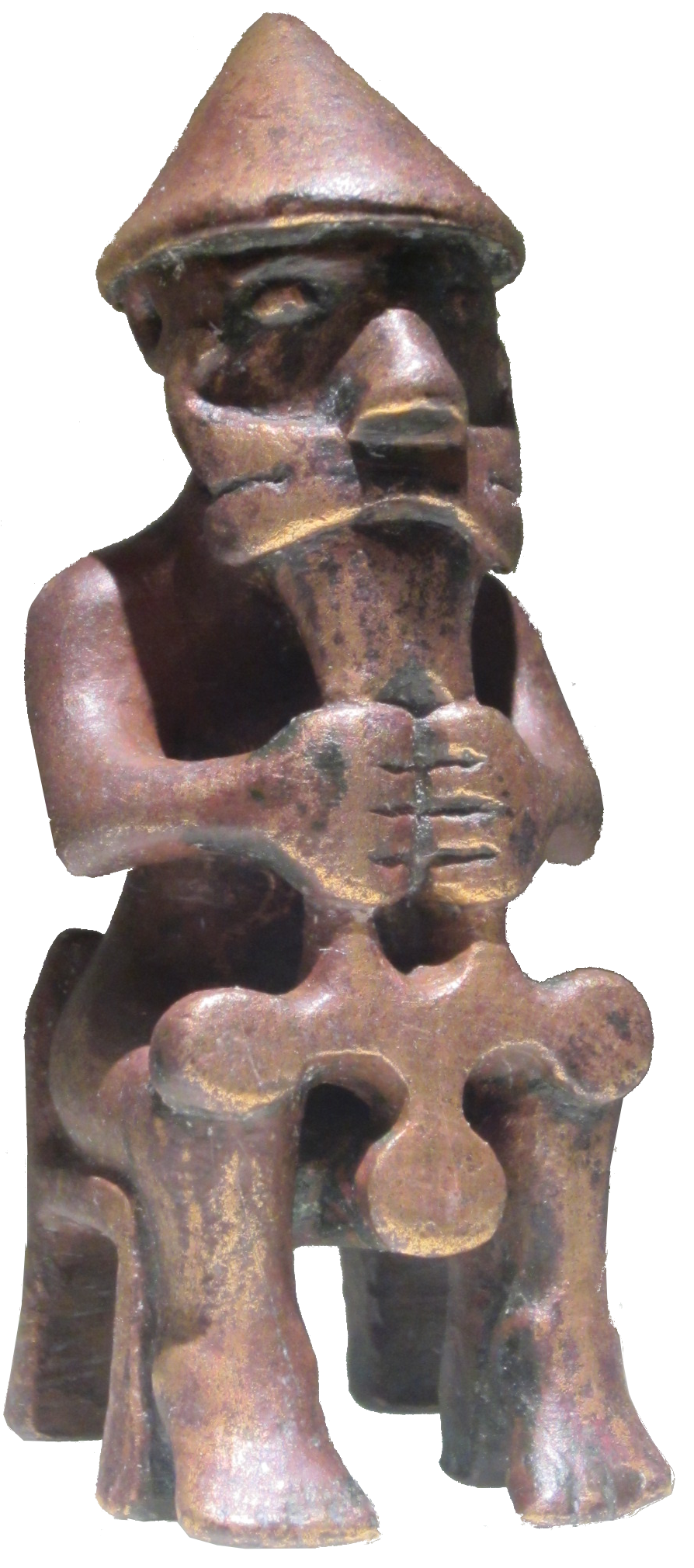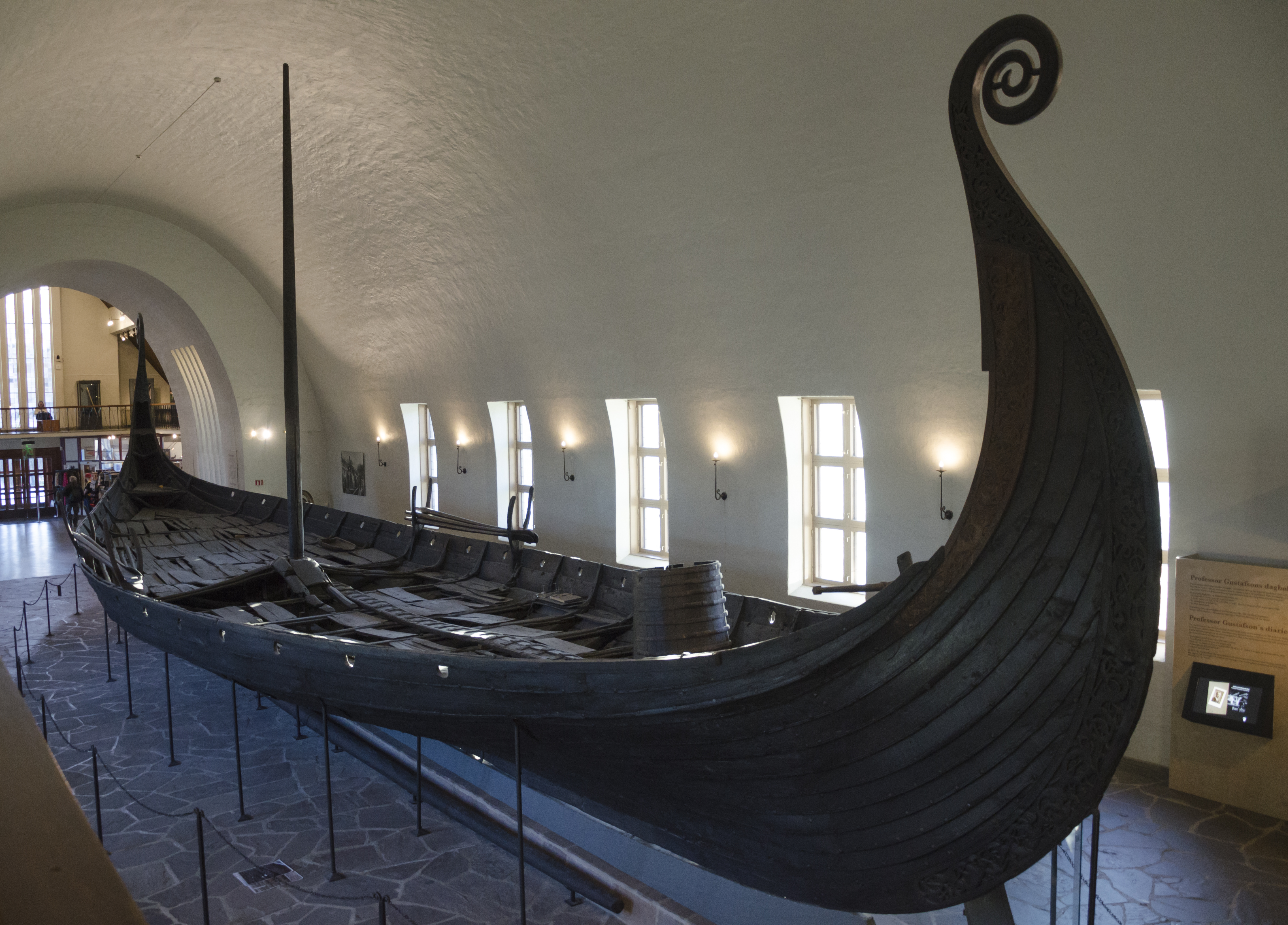Sites like burial mounds and sacred groves are powerful signs of ownership that can be used and re-used by subsequent leaders of an area. While not as immediately visible to all, portable objects can also be used as symbols of power. The Uí Néill king Mael Sechnaill II subjugated Dublin in 995, just a few years before Brian Boru. This subjugation included the possession of two artefacts from the Norse, described as the Sword of Carlus (cloidhemh Carlusa) and the Ring of Thor (fail Tomair).
Who 'Carlus' was is not known for sure, but it is likely a version of Frankish 'Carolus'. Duffy remarks in his 2014 book that this name appears among the Dublin Norse in the form of a Carlus mac Amlaíb (*Karlus? Óláfsson) whose death is recorded in the Irish annals in 868 (201). Therefore the Sword of Carlus may have been his literal sword, or ascribed to him, or he and the sword had the same namesake. In any event, the sword of Carlus, whose name was recorded over a century after Carlus mac Amlaíb’s death, was likely kept for ancestral veneration and/or a sign of military authority, lending it authority as a symbol of Dublin.
The second artefact is described as Fail Tomair, the same 'Tomair' that we saw is the Irish rendition of the Norse god Þórr or Thor. 'Fail' in Middle Irish can refer to a number of circular or round objects, and it is usually translated in this case as an arm-ring; it could potentially also refer to an enclosure, but it sounds like an object that was taken into Mael Sechnaill’s possession. The Fail Tomair was almost certainly part of a heathen tradition of sacred rings used in the swearing of oaths that were specifically associated with the god Thor. Colm from Irish Archaeology does an excellent job discussing the Ring of Thor in his page on Caill Tomair, so I quote in full:
This item…may have been a heathen cult object similar to the Thor’s ring described in the Kjalnesinga Saga. This Icelandic text describes a large ring, which was located within a temple dedicated to Thor. ‘On the altar was to lie a great armband, made of silver. The temple priest was to wear it on his arm at all gatherings, and everyone was to swear oaths on it whenever a suit was brought’. The use of this Thor’s ring in oath-swearing ceremonies mirrors contemporary Irish society where saint’s relics were often used for pledging oaths and making legal treaties.
Both the ancestral sword of Carlus and the godly arm-ring of Thor were likely used in oath ceremonies, particularly of a liegeman to his lord. This is a prominent plot point in Germanic medieval literature from Icelandic sagas to Beowulf to Old High German romances. Mael Sechnaill receiving the Sword of Carlus and the Ring of Thor was a symbol of his takeover of the town, a transfer of ruling power from the king of Dublin to his new over-king.
Unfortunately the sword and ring are no longer extant, or at least not yet recovered in archaeology or identified. There are, however, items of interest housed in the National Museum of Ireland that hint at heathenism in Dublin on an individual level. While unfortunately not currently on display, there is a fragment of an iron staff recovered from Kilmainham, dated on account of its contemporary artefacts to the ninth century.
Iron Staff Fragment, Kilmainham, Dublin. From The Viking Way (2002), drawing based on Boe (1940).
In his first edition of The Viking Way, Neil Price includes it among several dozen artefacts found across the Norse world that he believes to be staves utilised in heathen magical practices (199). These ornamented iron objects, frequently buried in wealthy graves, have been mis-categorised as cooking spits and whip shanks, but Price argues that they are too decorated to be practical implements.
Further examples from The Viking Way.
Furthermore, these staves fit numerous descriptions in medieval literature of a Norse witch or seer’s magical staff. Incidentally, one of these narratives is the aforementioned Cogadh, which includes the dramatic scene of a prominent Viking chieftain’s wife giving oracles from atop the church altar of Clonmacnoise, Co. Offaly, in the ninth century:
…is and do-bered Ota ben Turges a [h-uricli]/[frecartha] ar altoir Cluana mic Nois.
…the place where Ota, the wife of Turgeis, gave her [audience]/[answers] was upon the altar of Cluain Mhic Nois.
‘Audience’ is the word used in one copy of the Cogadh of three extant, whereas ‘answers’ is found in both the oldest/least complete and the youngest/most complete copies. Either way, both refer to magical practices that appear in Norse sources where a (typically) female seer occupies an elevated position and answers questions or makes pronouncements for her audience, based on her ability to perceive a spirit-world or after-life from her seat. The most famous example of this in Norse literature occurs in Eirikr saga rauðr.
As previously mentioned, heathenism did not conceive of itself as a religion until it encountered opposition. Heathenism became self-aware with the presence of Christian missionaries in Scandinavia, including Iceland. Archaeology shows the manufacture of pendants shaped like ‘Mjölnir’ or Thor’s hammer to be worn as a symbol of heathenism, as opposed to the Christian cross or crucifix which Christians and missionaries would wear. Observe this soapstone mould from Denmark, which allowed the silversmith to generate a cross or a hammer depending on what their client wanted:
Photo from Nationalmuseet, Copenhagen; from Anders Winroth, Age of the Vikings (2014).
While heathenism is polytheist and thus involves many gods, Thor is described in Norse literature as a particular friend and protector of the people. One of the holy symbols of Thor - the hammer he utilises to keep nasty giants away from humans - serves as a synecdoche, or part to represent the whole, of heathenism. Heathens who wanted to complement the cross of Christians chose a stylised Mjölnir to wear. As we have seen Thor’s name is associated with both a wood and a sacred object for the Norse at Dublin. He may have been the focal god for the families that settled in Ireland, whether from their ancestral homeland or as members of the Irish-Norse community. In fact, within poetry in the Cogadh, the Norse in Ireland are referred to as muintir Tomair - the tribe or family of Thor.
The use of pendants to mark one’s religion is not a certainty as to someone’s beliefs, but then again, nothing in archaeology really is. Nonetheless, it at least indicates that someone wants to depict themselves as such. Therefore, the existence of a Mjölnir pendant, whether buried with a body intentionally or dropped into the floor of a house accidentally, indicates that someone wanted to show themselves as a heathen. While the National Museum of Ireland doesn’t officially have any Mjölnir pendants in its collection, nevertheless it houses several objects that could be reconsidered as potential hammers or symbols of heathenism.
Mjölnir pendants come in several different varieties. This is a very simplified type chart from Wikipedia:
The A-type includes a conflation with a Finnish religious symbol of the Ukonvasara or hammer of Ukko, a god of thunder with similar properties to Thor in Finnish mythology. These Ukko’s Hammers appear at the same time as Thor’s Hammers and served the same purpose as a religious marker in complement to Christianity. The B-type is most common, and also includes objects that are somewhere between types A and B. The C-type is also considerable, and we’ll be taking a closer look at this wolf-headed Mjölnir from Iceland:
Þjóðminjasafn Íslands
It is possible that some conflation with the hammer occurred with Christian crosses, particularly the ‘tau’ cross that is essentially a T-shape. The most famous example of this is the Fossi ‘wolf cross’ from Iceland, which has engendered interpretations ranging from a purely Christian object rendered in a Germanic idiom, to a heathen object hidden behind a cross-like shape that would pass muster after Icelandic law requiring public adherence to Christianity. The similarity to an equally enigmatic artefact with this three-lobed shape is also notable. Is this a gaming piece, an idol of Thor, an image of Christ, or something else?
Þjóðminjasafn Íslands
Author photograph, NMI Kildare Street.
In a 2015 book chapter entitled ‘Meagre lead’, Patrick F. Wallace, the former director of the National Museum, reclassifies a number of items that had previously been categorised as lead fishing-line weights. (Incidentally, they are still labeled as such, but I can’t blame them not wanting to open up the case to fix a single line of text!)
Author photograph, NMI Kildare Street.
Instead of pragmatic items, Wallace now describes these lead-alloy objects as cross pendants and ‘anchors’, specifically ‘…functionless ornaments - a kind of 3D doodle’ (271-2). I find it difficult to accept that the production of cross pendants alongside these hammer-looking objects is purely coincidental. If an artisan is creating cross pendants in Norse Dublin, why cannot we consider that they are also creating Mjölnir type-A pendants?
In conclusion, while Norse Dublin was considered to have been well aware of Christianity for centuries, from their Gaelic Irish neighbours as well as in continental trade, nonetheless it contained heathen elements in its landscape, and its residents would not have necessarily considered themselves entirely Christian before the eleventh century. And even then, all we have is archaeology - landscape and objects - to suggest what those who had authority wished to display.
The 'oldest' church in Dublin is Christchurch Cathedral, originally founded by King Sitric Silkiskeggi or 'Silkenbeard' after his pilgrimage to Rome in 1028. Christchurch looked to Canterbury in England rather than to local Irish church authority, so while there were Gaelic churches in the area previously, this served as Norse Dublin’s first church of its own. Sitric was the first man in Ireland to mint his own coins, on an Anglo-Saxon model, and his sponsorship of Christchurch is in line with his desire to emulate English and continental Christian kingship. But this is a display of power and authority, not necessarily a sweeping stamp of the religious practices and faiths of all residents of Norse Dublin at the time.
Part II Works Cited
Duffy, Seán, Brian Boru and the Battle of Clontarf. Dublin, Gill & Macmillan, 2014.
Price, Neil. The Viking Way: Religion and War in Late Iron Age Scandinavia. Uppsala, Department of Archaeology and Ancient History, Uppsala University, 2002.
Thank you very much to the Friends of Medieval Dublin, especially Dr. Aíne Foley and Dr. Caoimhe Whelan, for hosting my talk.
---------
Part II Works Cited
Duffy, Seán, Brian Boru and the Battle of Clontarf. Dublin, Gill & Macmillan, 2014.
Price, Neil. The Viking Way: Religion and War in Late Iron Age Scandinavia. Uppsala, Department of Archaeology and Ancient History, Uppsala University, 2002.
Wallace, Patrick F. ‘“Meagre lead”: the ubiquity of lead in Hiberno-Scandinavian Dublin.’ In Purcell, Emer, et alia, eds., Clerics, Vikings, and High-Kings. Four Courts Press, Dublin, 2015, pp. 263-275.
Winroth, Anders. The Age of the Vikings. Princeton University Press, 2014.
---------
Thank you very much to the Friends of Medieval Dublin, especially Dr. Aíne Foley and Dr. Caoimhe Whelan, for hosting my talk.














